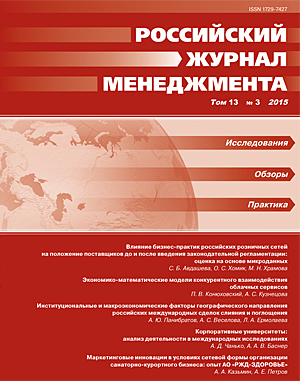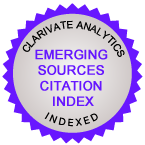Corporate Universities: International Studies Perspective
Abstract
Corporate universities have become an indispensable element of in-house training in a growing number of Russian companies. So, the acquaintance with the world best practices of corporate universities creation and development becomes crucial for the professionals in this field. At the same time, the study of such experience could be productive provided the understanding of the general internationally accepted principles of analysis of corporate universities performance. This article is devoted to the systematization of the theoretical concepts of prominent international researchers and experts that deal with the diversity of modern corporate universities. The authors modify the framework proposed by A. Lui Abel and J. Li for the analysis of corporate university. The article describes five profiles (aspects) of the corporate university: organizational, learning, operational, partnership and marketing. Each profile reveals a set of measurable and manageable characteristics of corporate universities activities. This framework could be used as a basis for further comparative studies and empirical analysis of corporate universities in Russia with internationally accepted criteria.
Keywords:
corporate universities, corporate training, learning organization
Downloads
References
Translation of references in Russian into English
Downloads
Published
How to Cite
Issue
Section
License
Articles of the Russian Management Journal are open access distributed under the terms of the License Agreement with Saint Petersburg State University, which permits to the authors unrestricted distribution and self-archiving free of charge.





